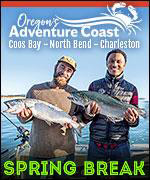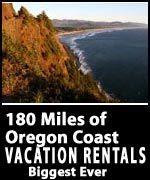Weird Things Oregon Coast Sands Can Do
Published 12/15/22 at 3:25 AM
By Oregon Coast Beach Connection staff
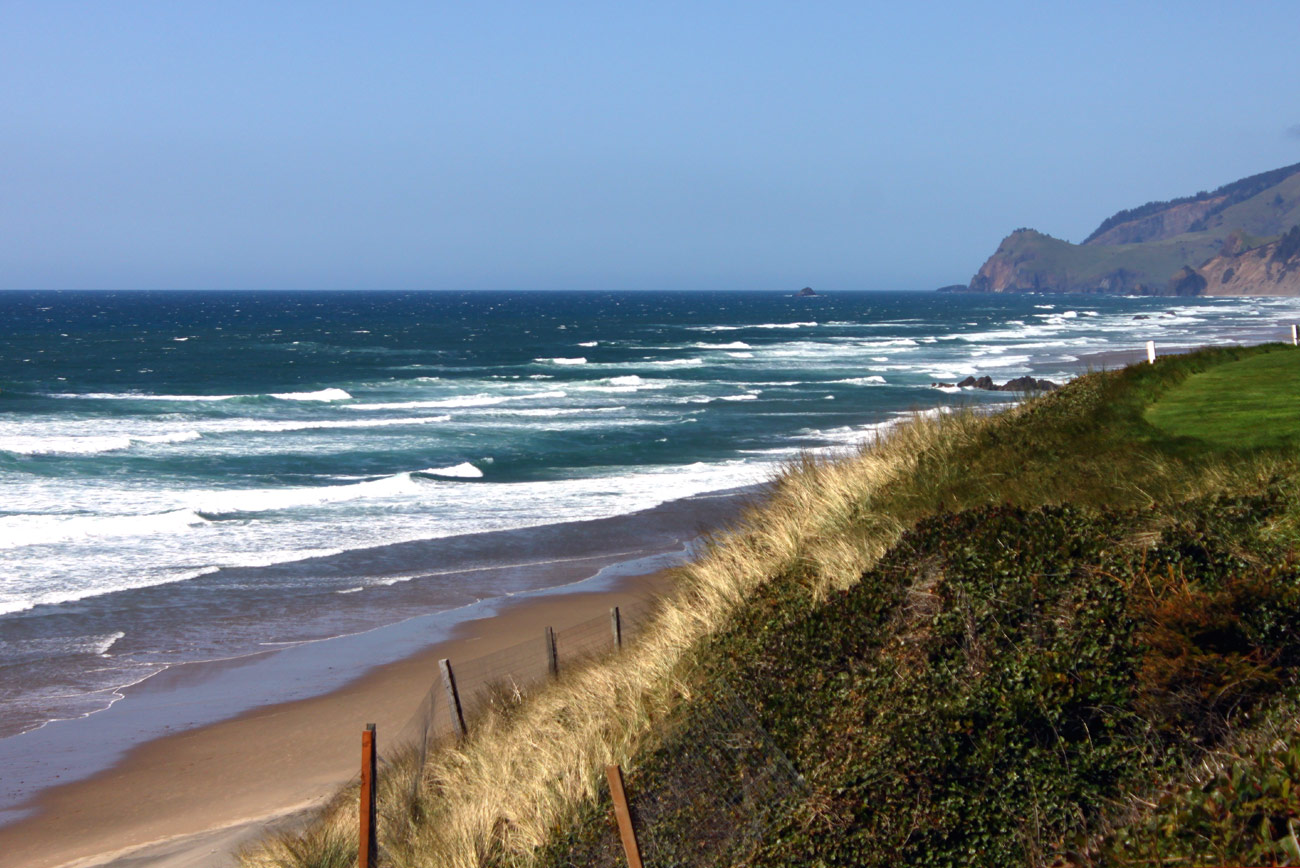
Includes exclusive listings; some specials in winter
In Cannon Beach:
Includes rentals not listed anywhere else
In Manzanita, Wheeler, Rockaway Beach:
Some specials for winter
In Pacific City, Oceanside:
Some specials for winter
In Lincoln City:
Some specials for winter
In Depoe Bay, Gleneden Beach:
Some specials for winter
In Newport:
Look for some specials
In Waldport
Some specials for winter
In Yachats, Florence
Some specials for winter
Southern Oregon Coast Hotels / Lodgings
Reedsport to Brookings, places to stay; winter deals
(Oregon Coast) – We all love to have it squishing beneath our feet, take long walks on it at sunset holding hands (yay for cliches), or maybe build a castle in it. Sand is by far and away one of the biggest attractions of the Oregon coast, but few know what it can do or what's going on beneath it. Sand in this region is full of surprises, not the least of which is the fact that every beach has different elements in it. Sometimes you can see it in the different colors and granules; other times you have to look in a microscope. (Above: Lincoln City, photo Oregon Coast Beach Connection)
Oh, but there's more. Here's some wacky stuff these grains can do:
Change the Beach. The term “shifting sands” is quite real on the Oregon coast. Your favorite beach can change configuration from day to day, depending on tides and just how the winds blow sand around.
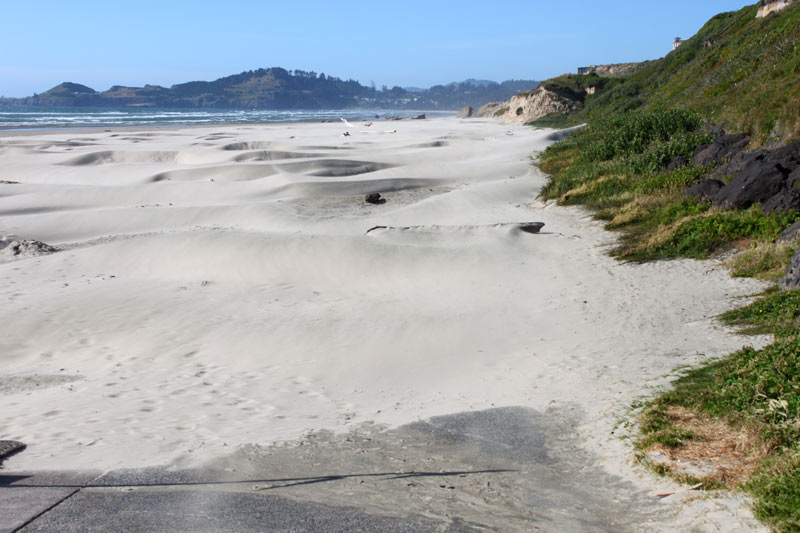
Nye Beach in Newport is one that can be especially striking, though most people don't normally give it a second glance. In the summer, sand levels are higher along the entire Oregon coast and Washington coast because mellow seas deposit sand – lots of it. So in Newport you generally have larger, puffy dunes, and there's large spaces between and a mix of steep to easy slopes. If there's enough wind, it moves them around.
Take a photo in one place and look carefully at the shapes of the dunes. Come back maybe a couple hours later and take the same shot: it's quite likely you'll see slight changes in the “designs,” even the depth of some of them.
You'll notice all this more in the drier sands farther away from the tideline. That stuff moves much easier.
Come back the next day and you'll see marked differences in those shapes, and even more so a few days to a couple weeks later.
Rain will change the shapes too, but it may make them stay in those outlines for a bit longer if they're really soaked.
Like the photo above: those footprints will be gone in a few minutes to an hour or two at most.
Big tides drastically change the beach. Especially in winter, when sand levels get lower and storm surges or even just heavy waves start smacking things around, you can lose as much as ten feet worth of sand in a few hours.
Hug Point near Cannon Beach is a great place to watch those shifts take place. That mushroom-shaped rock near the entrance can suddenly get shorter or longer. But it's not the actual height of the thing that's changing. It's just sand levels below it revealing more or less.
On the southern Oregon coast, Meyers Creek Beach and that surrounding area has some fascinating dune shapes that rise and fall with the seasons.
On occasion, you'll find that sheets of rain and winds will actually sculpt the beaches into unusual shapes, entirely naturally.
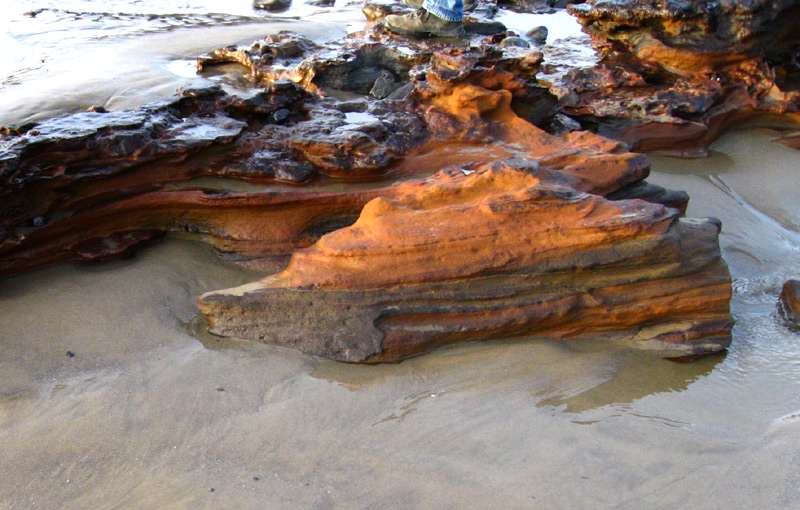
"Red towers" photo Oregon Coast Beach Connection
Reveal Freaky Stuff. Winter sand levels can nosedive, depending on storm erosion. 2021/22 wasn't that spectacular for either, but some years are incredible banner years, where 35-foot waves come roaring ashore more than a couple times and sand just gets sucked away. Such as 2008, when the beach at Pacific City lost some 20 feet in a couple weeks.
It was that season and the winter before that mind-blowing stuff was revealed by all that sand along the Oregon coast going away. Among them was the mystery shipwreck at Coos Bay, later discovered to be a wreck from the '40s everyone just forgot about. There was an old timey mail truck found at Waldport, and in Arch Cape two cannon were found from a 19-century wreck – two of the three that inspired the name Cannon Beach.
Many winters, ancient bedrock gets exposed, especially the fossil-ridden, 18 million-year-old layers at Newport's Moolack Beach. Most spectacular and rare was the 15 million-year-old basalt basement of Cannon Beach that showed itself briefly at Silver Point.
There's also those wild red towers, strangely-shaped blobs of iron oxide-covered sand. Last but not least, there are far more ghost forests on the Oregon coast than in Neskowin. Much older ones exist underneath places like Moolack Beach, Arch Cape, north of Seal Rock and in somewhat plain sight at Coos Bay's Sunset Bay. These are often 4,000 years old, while there are some astounding 80,000-year-old ones rarely seen at Netarts.
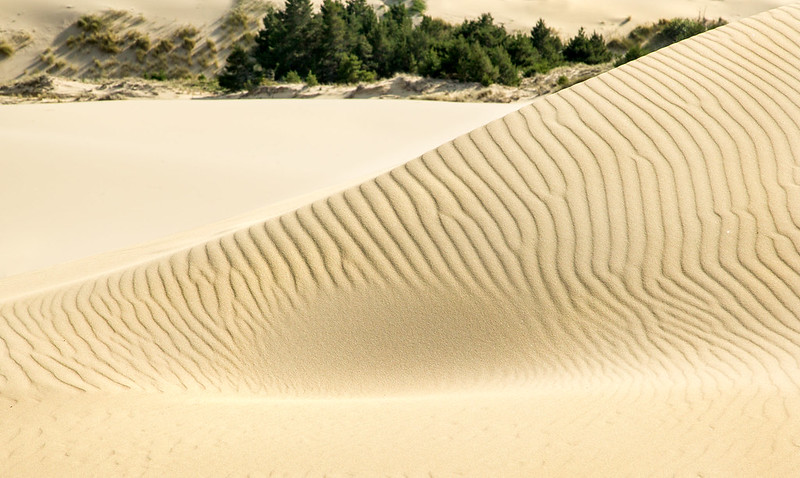
Florence-area dunes, courtesy Sheila Lund
Sands That Sing. Singing sands along the Oregon coast have a long, convoluted history, and it seems the phenomenon has simply disappeared. The real singing sands concept is sands that make a violin noise, a slight rumbling / low noise, or a sound a bit like a freaky choir. There are squeaking sands sometimes found in various beaches, a little more often around Cannon Beach and Manzanita, but Oregon Coast Beach Connection has encountered it in Lincoln City before.
Actual singing sands were somewhat legendary in the Oregon National Dunes Recreation Area between Florence and Coos Bay, but the last time it was heard by employees there seems to be the '70s. However, Oregon Coast Beach Connection has discovered one dune buggy biz there that knows more, and this will be a feature article here soon. Oregon Coast's Weird Singing Sands: Cannon Beach, South Coast and Elsewhere | Video
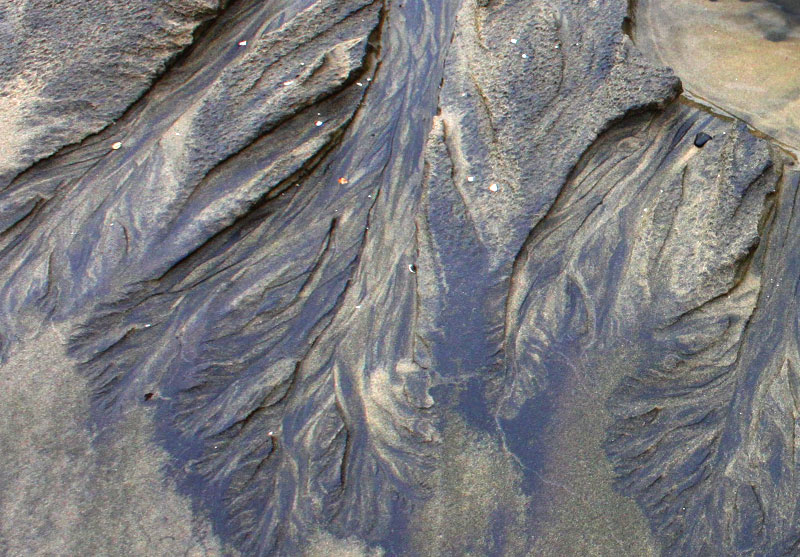
Dendritic Patterns. This is like....whoa man.....trippy. On top of that, it's one thing (and maybe the only thing) our beaches have in common with Mars.
Dendritic patterns are those branchlike squiggly lines you see in the sands during rainy days. They can occur any place at any time on the Oregon coast or Washington coast, and there's a definite fractal or Mandelbrot set-like element to them.
On a grander scale, these are the same figures a river makes in the land around it, and they are found on Mars as well, showing us that rivers once ran through that alien terrain.
In short, they're various minerals in the sands that get washed down and then spread out into innumerable configurations. That heavier material alters the path that rainwater and ocean water take on a smaller scale. See the full story What Are These Curious Branch-Like Patterns on Oregon Coast
Create Dangerous Holes. This is largely a summer problem, when large sandbars get formed around and just beyond the tideline, leaving large gaps between the bumps. Those large gaps are holes that you can't see, especially when you're wading a bit into the breakers and the sands add a lot of murkiness to what's beneath your feet.
The danger comes when you step off a sandbar and into one of those gaps, and then you suddenly drop two to four or five feet. People have died on the coast that way, as the body is stunned by such an abrupt landing and seawater enters your mouth. See the full story: Dangers in Surf, Crab Holes
Oregon Coast Hotels in this area - South Coast Hotels - Where to eat - Maps - Virtual Tours
Cannon Beach Lodging
Nehalem Bay Lodgings
Manzanita Hotels, Lodging
Three Capes Lodging
Pacific City Hotels, Lodging
Lincoln City Lodging
Depoe Bay Lodging
Newport Lodging
Waldport Lodging
Yachats Lodging
Oregon Coast Vacation Rentals
Oregon Coast Lodging Specials
More About Oregon Coast hotels, lodging.....
More About Oregon Coast Restaurants, Dining.....
 Andre' GW Hagestedt is editor, owner and primary photographer / videographer of Oregon Coast Beach Connection, an online publication that sees over 1 million pageviews per month. He is also author of several books about the coast.
Andre' GW Hagestedt is editor, owner and primary photographer / videographer of Oregon Coast Beach Connection, an online publication that sees over 1 million pageviews per month. He is also author of several books about the coast.
LATEST Related Oregon Coast Articles
Work in Newport was set for Monday but winds were too harsh. Newport lighthouse
N. Oregon Coast's Dangerous Short Beach (by Oceanside) Slowly Getting a New S...
Several regional groups working on the project to reopen the access
Search for Missing Man on Washington and Oregon Coast Suspended
His vessel found abandoned at sea and lifeboat still aboard
Bandon Event Lets You 'Eat Like an Otter' on South Oregon Coast
Aug 13 you forage off the beach then enjoy your own lunch. Bandon events
Labor Day Weekend Travel Tips, Advice for Oregon Coast, 2025
Higher lodging prices, more traffic, gas prices, weather and tips
Tsunami Advisories Canceled on Oregon Coast, Washington Coast
Updates. Experts are more worried about unusually heavy currents. Weather, Sciences, events
Lincoln City Fall Kite Festival Returns with Night Flights Over Central Orego...
Sept 19 - 21 there's a new addition and some extra glass floats. Lincoln City events
Ken Kesey's Clifftop Oregon Coast Home Up for Sale, Vibes are Inspirational
Between Yachats and Florence, it inspired him from the '70s onward. Trave tips, sciences
Back to Oregon Coast
Contact Advertise on Oregon Coast Beach Connection
All Content, unless otherwise attributed, copyright Oregon Coast Beach Connection. Unauthorized use or publication is not permitted














